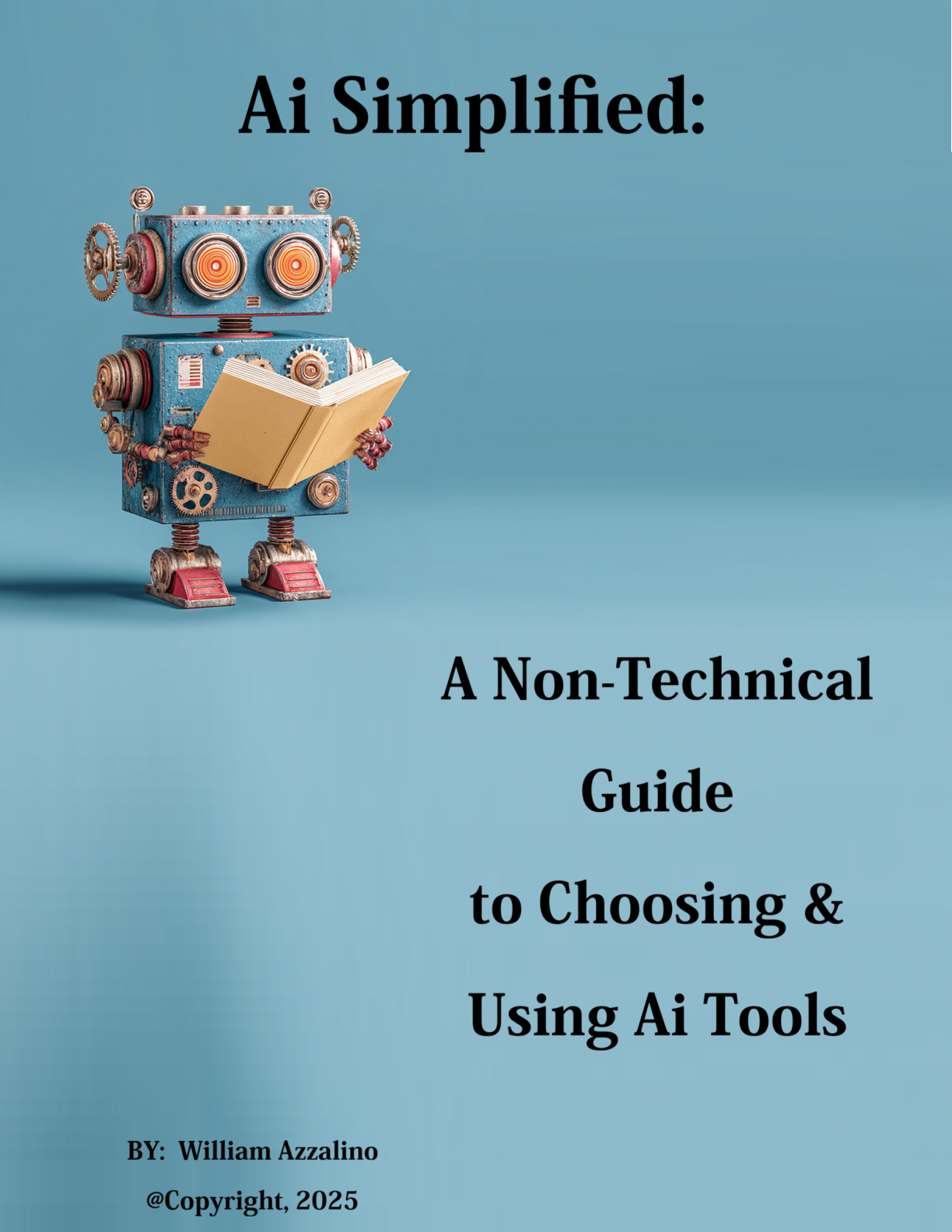
Ai Simplified: A Non-Technical Guide to choosing and using Ai Tools
Reliable shipping
Flexible returns
Foreword
By: William Azzalino, AIA
When I first encountered artificial intelligence in the 1970s, it wasn't called AI—it was simply the cutting edge of what computers could do. I was deep in the trenches of computer graphics, writing algorithms that could determine which lines should be visible and which should be hidden when rendering three-dimensional objects on a two-dimensional screen. It sounds simple now, but back then, teaching a machine to "see" the way humans naturally see was revolutionary.
That early work taught me something fundamental: the most powerful technology means nothing if people can't use it.
Over the past fifty years, I've had the privilege of watching—and participating in—the evolution of computing technology from room-sized mainframes to the AI assistants we now carry in our pockets. I've applied these technologies to architecture and interior design, helping professionals visualize spaces that existed only in imagination, transforming how buildings are designed, planned, and brought to life. Through all of this, one truth has remained constant: the gap between what technology can do and what people actually do with it is where real value either flourishes or dies.
Today, we stand at a similar threshold with artificial intelligence. The technology is breathtaking—AI can write, analyze, create, and solve problems in ways that seemed impossible just years ago. But here's the problem: most people are paralyzed by choice, drowning in options, confused by conflicting advice, and terrified of making the wrong decision.
I wrote this book because I've been on both sides of this equation.
I've been the technologist pushing the boundaries of what's possible. I've coded the algorithms, debugged the systems, and marveled at breakthrough moments when machines suddenly "understood" what we were asking them to do. But I've also been the person trying to help non-technical professionals—architects, designers, business owners—harness these tools without needing a computer science degree.
This book isn't about impressing you with technical wizardry. It's about empowering you to make confident decisions.
You don't need to understand how a combustion engine works to drive a car effectively. Similarly, you don't need to understand neural networks or machine learning to use AI tools that can genuinely transform your work and life. What you do need is clear, honest guidance from someone who's been navigating technology adoption for half a century.
In these pages, you won't find hype. You won't find jargon-filled explanations designed to make you feel inadequate. You won't find blanket recommendations that ignore your specific needs and situation.
What you will find is:
- Clarity in chaos – straightforward explanations of what AI tools actually do and which problems they solve
- Practical decision frameworks – systematic approaches to evaluating which tools deserve your time and money
- Real-world perspective – insights from someone who's watched multiple technology revolutions and knows which patterns repeat and which lessons matter
- Permission to start small – you don't need to transform everything overnight; you just need to take the right first steps
I've spent five decades watching people struggle with new technologies, and I've noticed something: the people who succeed aren't necessarily the most technically savvy. They're the ones who ask the right questions, make informed choices, and aren't afraid to experiment within safe boundaries.
The AI revolution is happening whether we're ready or not. But unlike previous technological shifts, this one is remarkably accessible—if you know where to start and how to evaluate your options.
My hidden line algorithms helped computers understand visual perspective. This book helps you gain perspective on AI—cutting through the visible noise to reveal what actually matters for your needs, your work, and your goals.
The future belongs to those who can harness these tools effectively, not just those who build them. Whether you're a business professional, creative professional, educator, entrepreneur, or simply someone who wants to work smarter, this guide will give you the confidence to step forward.
Technology should serve you, not intimidate you. Let's make sure it does.
William Azzalino
Computer Graphics Pioneer & Technology Implementation Specialist
Fifty Years Bridging the Gap Between Innovation and Application



